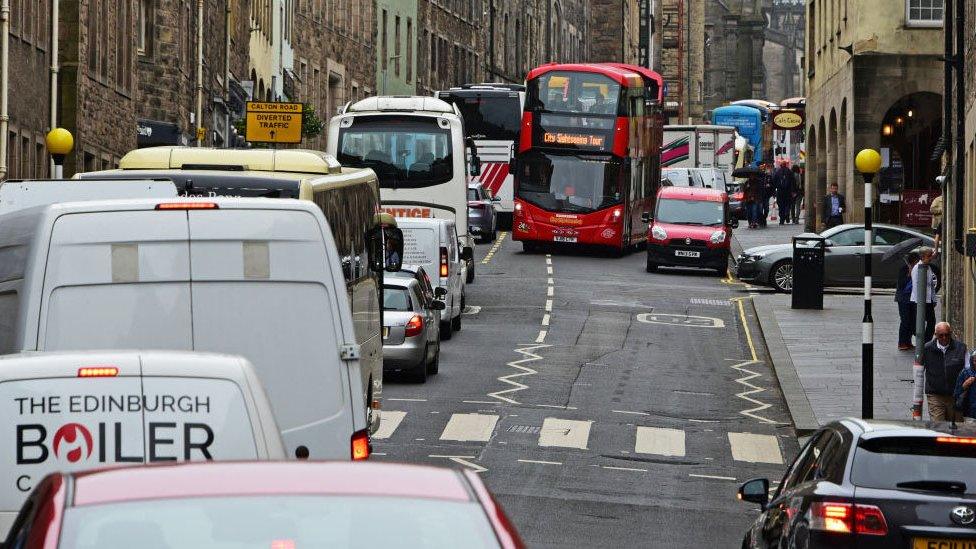Low emission zones: Most-polluting cars to be barred from city centres
- Published
- comments
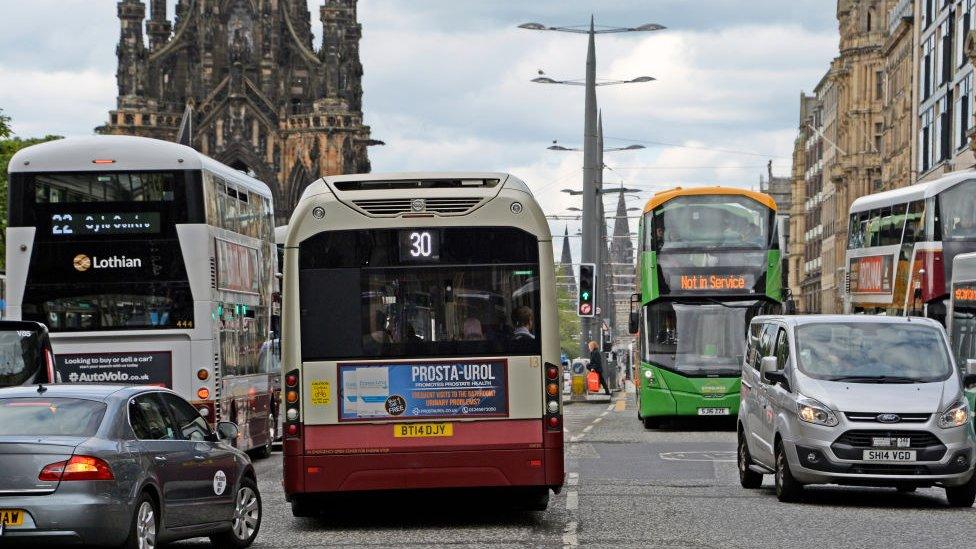
Analysis conducted by a satellite navigation system in 2019 found Edinburgh to have the worst congestion of any city in the UK
Restrictions prohibiting the most-polluting vehicles from the centres of four Scottish cities have moved a step closer following the introduction of low emission zones.
The zones are now formally in place in Edinburgh, Glasgow, Aberdeen and Dundee in a bid to improve air quality.
It will eventually see many older vehicles barred from some streets, but rules are not yet being enforced.
When they are, motorists could face a £60 fine.
Transport Minister Jenny Gilruth hailed the introduction of the low emission zones (LEZs) as a "truly significant public health moment for Scotland".
Experts say air pollution is causing new lung conditions like lung cancer and worsening existing conditions like asthma and COPD.
But some communities have raised concerns that the schemes will only displace traffic and emissions to roads that skirt the city centre.
How do low emission zones work?
In LEZs vehicles must meet required emissions standards to avoid a penalty.
Diesel-powered cars and vans will need to be at the "Euro 6" standard, mainly applying to vehicles registered after September 2015.
And petrol cars will have to meet the "Euro 4" emissions standard - generally those registered after January 2006.
Blue badge holders, emergency service vehicles, motorbikes and mopeds will be exempt.
Local authorities will use automatic number plate recognition technology to fine drivers who fail to adhere to the restrictions.
Penalties will typically be set at £60, halved to £30 if paid early. That will double for each subsequent offence within a 90-day period.
An LEZ is already in place for buses in the centre of Glasgow. It will be extended to apply to other vehicles from 1 June 2023.
In Edinburgh and Aberdeen enforcement of the restrictions will begin on 1 June 2024, and in Dundee non-compliant vehicles will be subject to fines from 30 May 2024.
How will it affect local residents?

Simon Holledge, of Edinburgh Association of Community Councils, says the zones will drive traffic into other parts of the city
Concerns have been raised by some that the scheme will displace traffic and emissions to roads outside the city centre, and it could encourage people to drive further to avoid the zone.
Simon Holledge, secretary of the Edinburgh Association of Community Councils said the capital's LEZ was "not ambitious enough".
"The zone is only 2.5% of the urban area of Edinburgh, which is only three square kilometres out of 120," he said.
"Key roads like Queen Street, for example, will be excluded from the low emissions zone and we will have polluting, non-compliant vehicles using these roads even more than they are at the moment.
"Ironically, more thought and planning has gone into the escape route, the ring road around the LEZ, than the LEZ itself."
Scott Arthur, City of Edinburgh Council's interim transport and environment convener, admitted it was "not perfect" in its current form, describing it as a "blunt tool that focuses on the age of vehicles rather than emissions".
But he told the Local Democracy Reporting service: "What we've got is a reasonable compromise and it will save lives, so it's worth going forward with and it'll be under continual review, particularly over the next two years. I think over time we'll get something that meets Edinburgh's needs."


This milestone's a big deal for the Scottish government - but for motorists, the journey's yet to begin.
While a ton of work's been done to create low emission zones in Scotland's four biggest cities, they don't take effect for a year or two - depending where you live.
Why then such a big deal? LEZ's are now signed into law, as promised in the SNP programme for government. So barring a screeching U-turn, they will happen. The boundary lines are drawn - plans have been agreed by councils and approved by ministers.
But you would be right to think Glasgow's had an LEZ for ages. It has - for buses - since 2018.
And there's now a big pause, before cars and vans are hit by this new regime.
Anyone driving into Glasgow will face enforcement a year from now - in June 2023. Glasgow residents have another year's grace.
And Edinburgh, Dundee and Aberdeen won't enforce their LEZ's until May or June 2024. When the rules bite, high-polluting cars and vans will face a penalty if they drive in the zone.
So, many motorists have a year - or two - to decide if they will change their vehicle, or change their driving habits. This delay gives them time to make a plan.

Will it change behaviour?
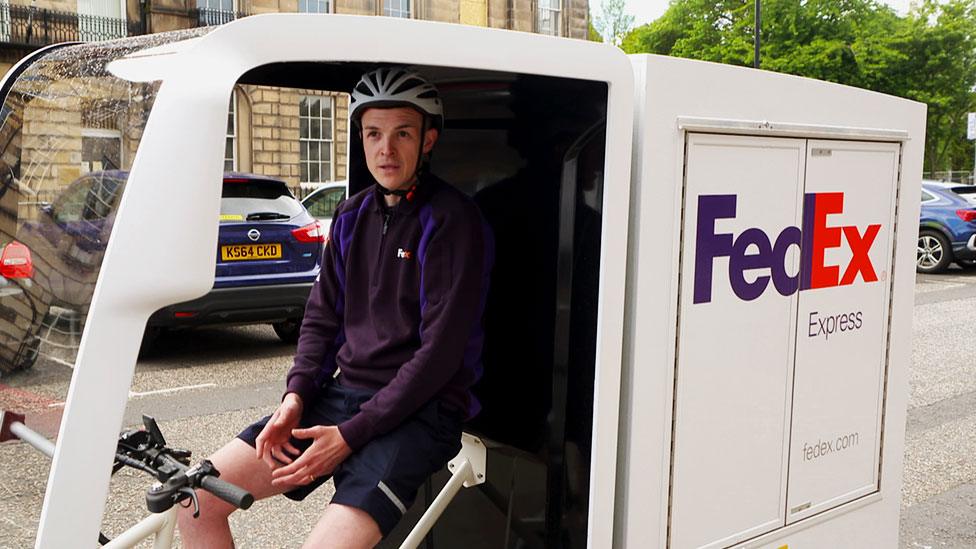
FedEx rider James Challoner says people seem happy to receive their deliveries from a low emissions vehicle
Some businesses have already introduced measures to comply with the new requirements and reduce their emissions.
Delivery company FedEx Express has introduced a fleet of e-cargo bikes in the city centres of Edinburgh and Glasgow to replace diesel vehicles.
"We estimate replacing one van with bikes will save, on average, 3.6 tonnes of CO2 emissions a year," Douglas Todd, the company's Scottish operations manager, told BBC Scotland.
"Using bikes in city centres also gives our customers a better experience. It allows us to use bus and cycle lanes to get deliveries there faster and use kerb-sides to get closer to customer drop-off points."
And Edinburgh resident Michaela Jackson switched to a cargo bike after her family used their car less during the pandemic.
"The car was costing us a lot of money and as both of us were working from home, we thought about whether we could live without it," she told BBC Scotland's The Nine.
"When we heard the low emission zone would be coming in, we thought 'why not give it a go?' It is really practical for all our usual journeys and short shopping trips."
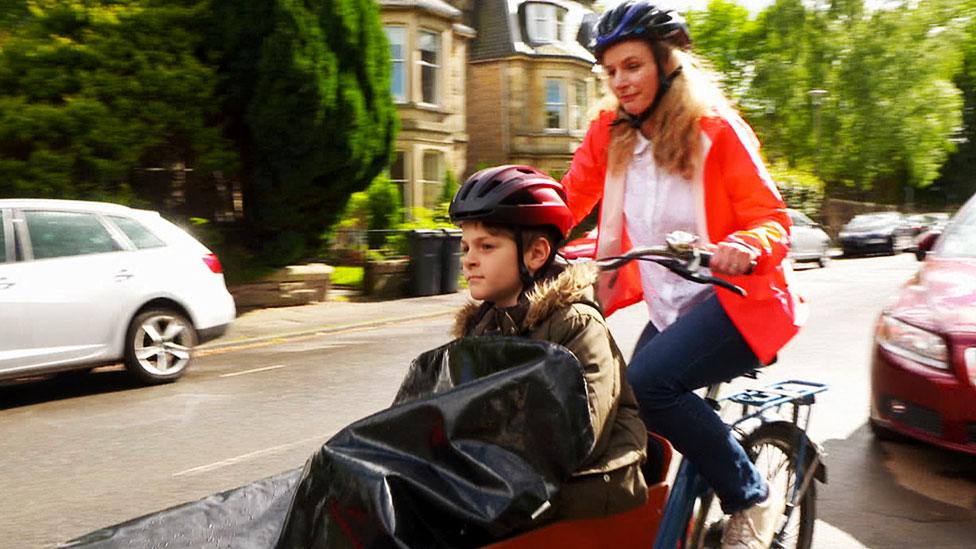
Michaela Jackson's family gave up the family car in favour of an e-cargo bike
Transport minister Ms Gilruth said that while air quality in Scotland's cities is "generally good", for too long "pollution has exceeded legal limits for health in our city centres as a consequence of unrestricted vehicle emissions".
"We have a moral responsibility to act," she added. "Air pollution often disproportionally impacts those with the least in our society.
"It causes the most damage to the youngest, the oldest and those with pre-existing medical conditions."
Joseph Carter, of Asthma+Lung UK, said air pollution was the biggest environmental threat to public health.
"More than 70,000 children have asthma in Scotland and for them, peaks in toxic air can put them at risk of a potentially life-threatening attack," he added.
"The gradual roll out of low emission zones is going to be a huge step forward to start tackling this major health problem."
- Published12 June 2021
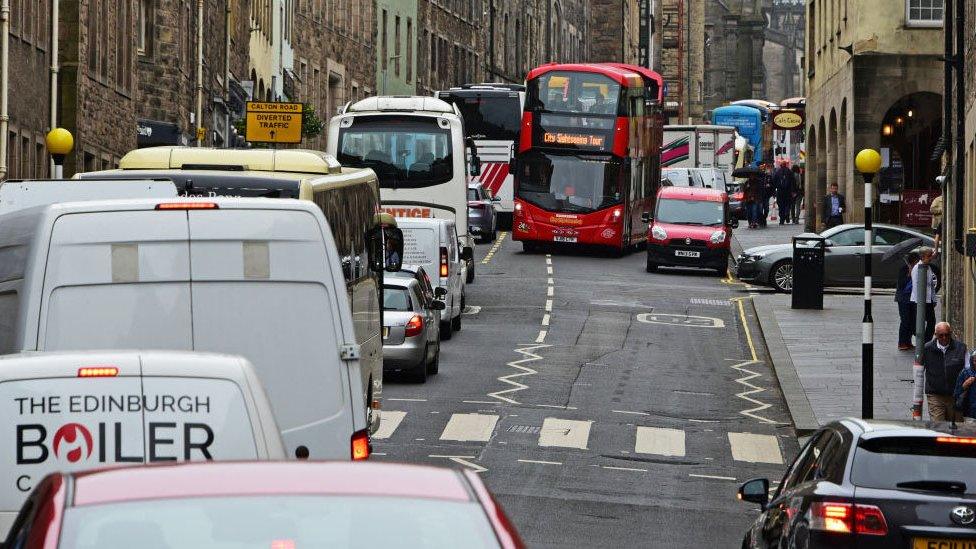
- Published22 January 2020
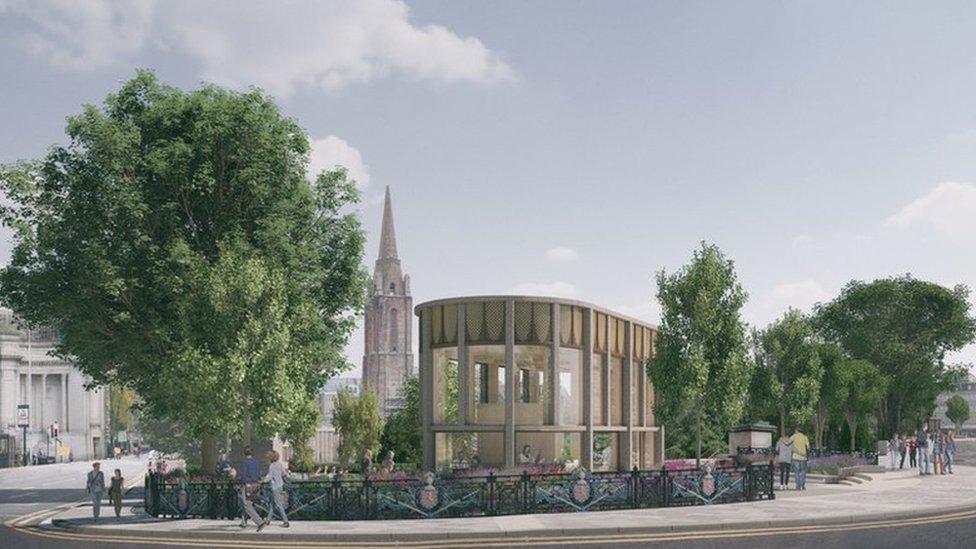
- Published10 May 2019
